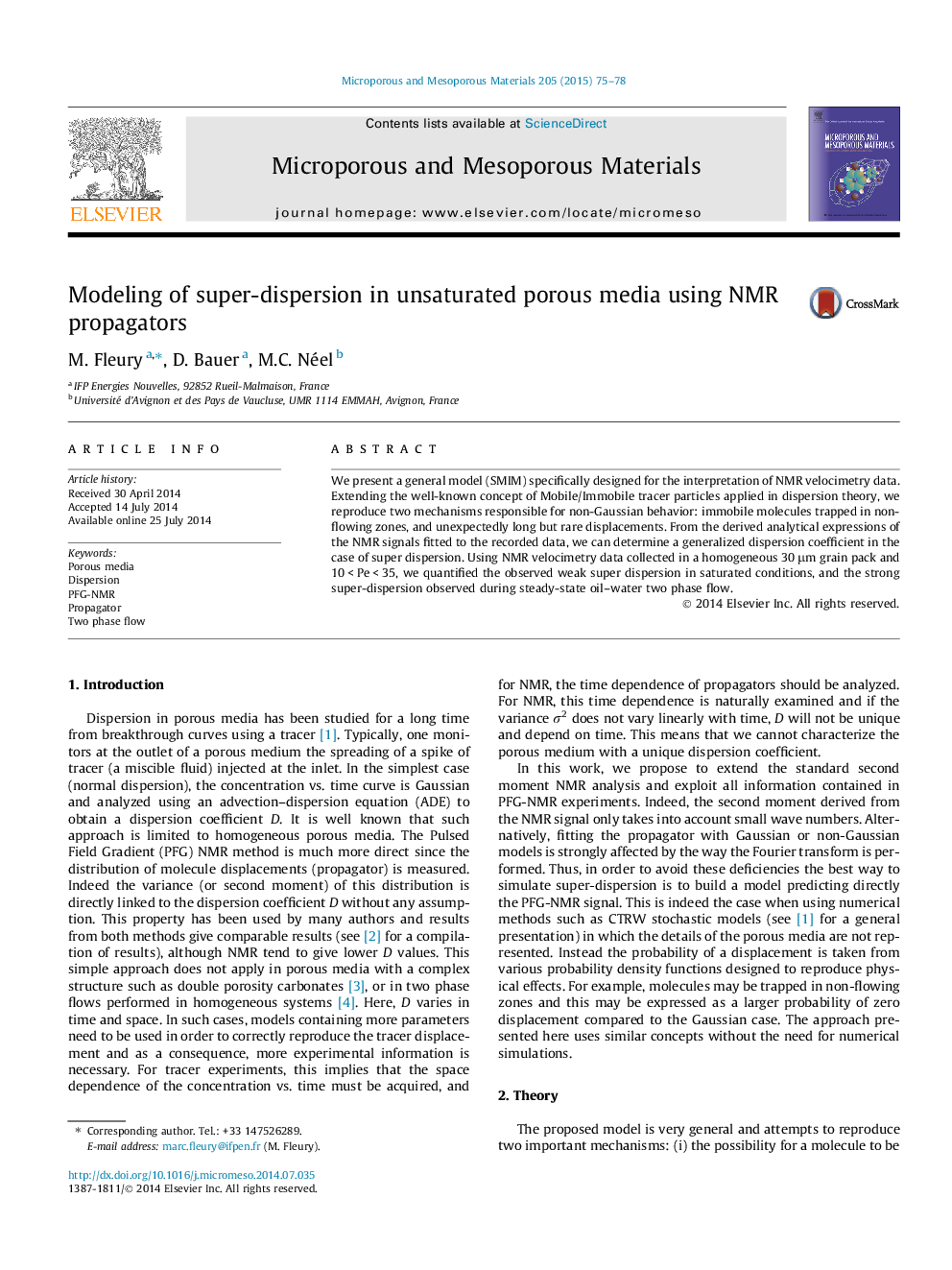| Article ID | Journal | Published Year | Pages | File Type |
|---|---|---|---|---|
| 72816 | Microporous and Mesoporous Materials | 2015 | 4 Pages |
•We present an overview of a new model to interpret dispersion in porous media.•The model can reproduce various shapes of NMR propagators (asymmetric, bimodal).•The model predict the PFG-NMR signal directly.•Model fitting is performed using the PFG-NMR signal instead of the propagator.
We present a general model (SMIM) specifically designed for the interpretation of NMR velocimetry data. Extending the well-known concept of Mobile/Immobile tracer particles applied in dispersion theory, we reproduce two mechanisms responsible for non-Gaussian behavior: immobile molecules trapped in non-flowing zones, and unexpectedly long but rare displacements. From the derived analytical expressions of the NMR signals fitted to the recorded data, we can determine a generalized dispersion coefficient in the case of super dispersion. Using NMR velocimetry data collected in a homogeneous 30 μm grain pack and 10 < Pe < 35, we quantified the observed weak super dispersion in saturated conditions, and the strong super-dispersion observed during steady-state oil–water two phase flow.
Graphical abstractFigure optionsDownload full-size imageDownload as PowerPoint slide
